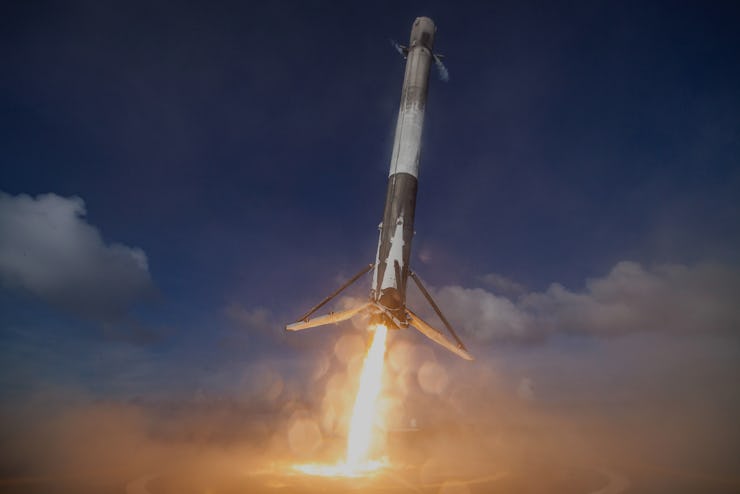Elon Musk debuts SpaceX’s latest tool in the bid to reuse rockets
Ready for action!

SpaceX is beefing up its rocket-reusing technology.
On Sunday, CEO Elon Musk shared an image via Twitter of the company’s two fairing-catching ships out on the water. Ms. Tree, the company’s existing ship, has been joined by newcomer Ms. Chief. The latter ship received the arms to catch the fairings in less than one day earlier this month, according to eagle-eyed SpaceX followers, and the new capabilities could prove essential for future missions.
The fairing is one of the biggest components SpaceX has yet to fully master in its recovery process. The two-part shielding is designed to protect a payload like a satellite during launch, but collecting the shieldings after launch has proved tricky. Ms. Tree, previously known as Mr. Steven, uses a giant net and waits in the ocean to try and catch the component after launch. The prize is a multi-million dollar component that could fly again on a rocket ship, ultimately reducing flight costs and paving the way for more ambitious missions like a city on Mars.
See the ships in action below:
Ms Chief and Ms Tree.
It may be a while before the ships get to test their fairing catching abilities — Teslarati notes that the company currently has no fixed dates for any of its upcoming launches, an unusual situation that also gives the company time to fine-tune its ships.
SpaceX: why the fairing is so key
Rocket launches are expensive. The Falcon 9 rocket most commonly used by SpaceX to launch satellites costs an estimate $62 million. SpaceX has practically perfected landing the first-stage booster on both land and sea, a component estimated to cost around $45.5 million. While its first attempt to save the booster in 2013 failed, in 2017 it caught 15 boosters in a 100 percent success rate.
Although a lower priority component, the fairing is still key to reducing those numbers. Priced at an estimated $6 million, it’s far outside the budget of most space fans. Catching the fairing has proven tricky, though — they move to the ground at eight times the speed of sound. SpaceX has fitted the fairings with guidance systems and other gadgets, but for a long time, it failed to catch any fairing halves.
In July 2018, the vessel now known as Ms. Tree was upgraded with a net four times larger than its predecessor. The new net measured around 0.9 acres in size. New arms were fitted which made the net “springy, like a highly damped trampoline.”
Around 12 months later, the upgraded ship caught a fairing half during the Space Test Program-2 mission. The resultant video showed how the fairing shone bright blue as it fell to Earth.
In August 2019, Ms. Tree saw more success when it caught the component from the AMOS-17 mission.
Its fairing recovery process has already paid off. SpaceX reused the fairing from the Falcon Heavy mission in February 2018 to launch 60 Starlink satellites for its internet connectivity constellation.
All these missions will help pave the way for more complicated missions. The Starship, currently under development in Florida and Texas, is designed to be a fully-reusable rocket that builds on SpaceX’s expertise in reusing rockets. The company is planning to use the rocket to send a team of artists around the moon in 2023, and build a city on Mars as early as 2050.